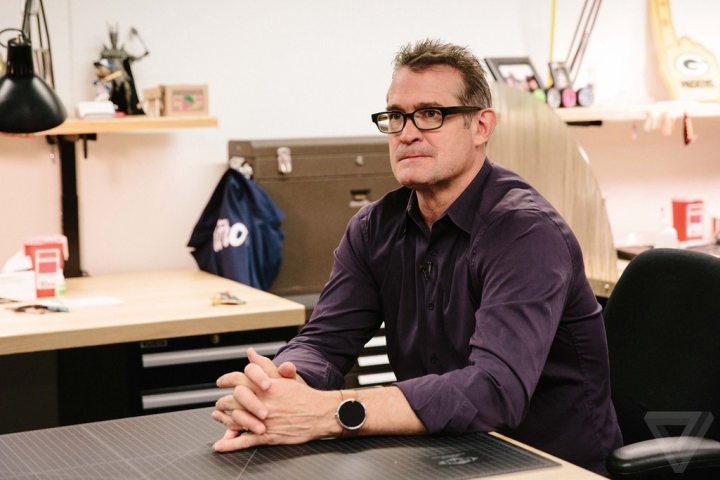
“We greatly appreciate Jim’s contributions in leading a consumer experience design team that delivered standout, iconic, and award-winning industrial design and user experiences for Moto’s mobile and wearable products,” an executive of Motorola Mobility and Lenovo’s Mobile Business Group said in a statement. “We wish Jim well as he enters this new phase in his career.”
Wicks, who worked as a designer for Sony until 2001 before accepting a leadership role at Motorola, is widely credited with pioneering some of the firm’s most celebrated smartphones and wearables. He oversaw the design of the clamshell Razr, a phone lauded for its striking appearance and thin profile, and the Ming, a touchscreen device sold in China that predated the iPhone. His more recent efforts include the Verizon-exclusive Droid series of phones, the 2013 Moto X, and the circular 2014 Moto 360 smartwatch.
Wicks retained his role at Motorola even as the company underwent drastic changes in ownership and structure. In 2011, the company’s smartphone division, Motorola Mobility, spun off from the rest of Motorola in an attempt to stem losses incurred by a stagnating product portfolio and sagging smartphone market. Google acquired the company for $12.5 billion.
In 2013, faced with Motorola’s mounting losses and under pressure by third-party Android manufacturers who felt threatened by the phone maker’s hierarchical proximity to Google’s software team, the search giant sold Motorola to Chinese smartphone company Lenovo for $2.9 billion. That lead to superficial changes — Motorola’s Chicago headquarters moved from Libertyville to River North — but also a decline in staff: by 2014, the company’s ranks had fallen from 3,000 to 2,000. And they continued to fall.
Lenovo Chief Executive Officer Yang Yuanqing pledged to turn the firm around in four years, a plan which has yet to materialize. Last year, Motorola’s parent firm laid off 500 employees following a 31-percent dip in phone shipments. Motorola held a 5-percent share of the global smartphone market in January 2016 — down 5.2 percent from a year prior, according to ComScore.
Despite the turmoil, Wicks, along with Osterloh and longtime Motorola engineering lead Iqbal Arshad, stayed on. The nail in the coffin, though, may have been Lenovo’s decision to take a more active role in shaping Motorola’s image and product lineup. It phased out usage of the company’s Motorola brand while retaining the shorthand “Moto” title for high-end smartphones, and oversaw the release of underwhelming follow-ups to last year’s mid-range Moto G series. (Tellingly, in Lenovo’s May financial report, it wrote that its Motorola integration efforts “did not meet expectations.”)
Whether the departure of Wicks signals the beginning of a wider exodus remains to be seen, but one thing’s for certain: Motorola has lost one more talented team member.

